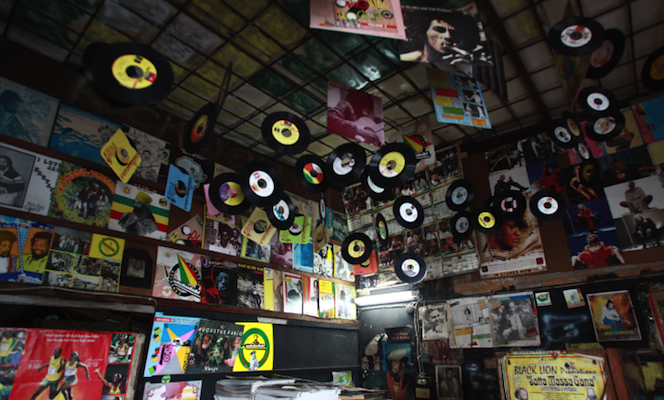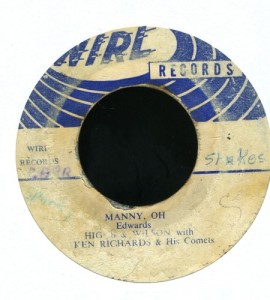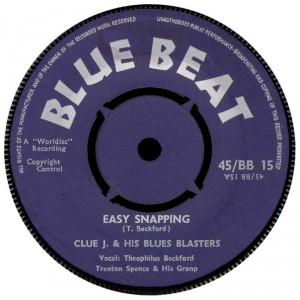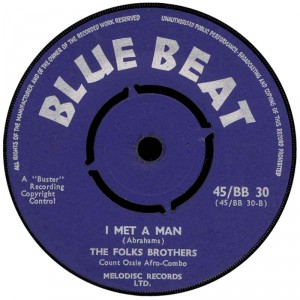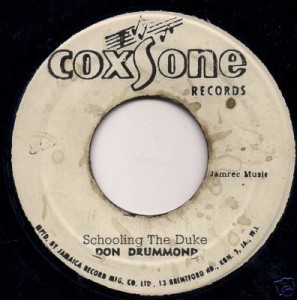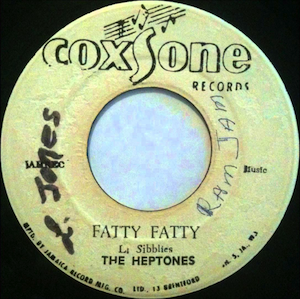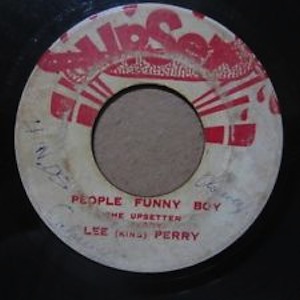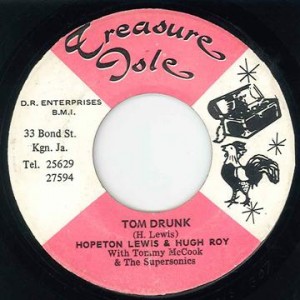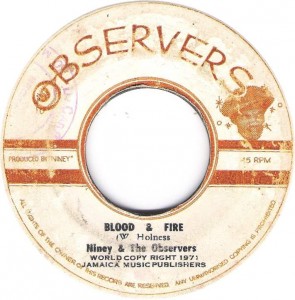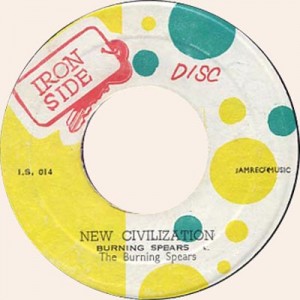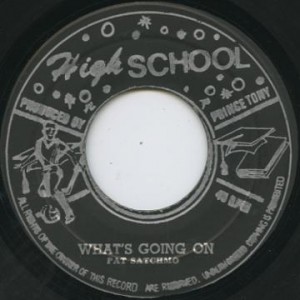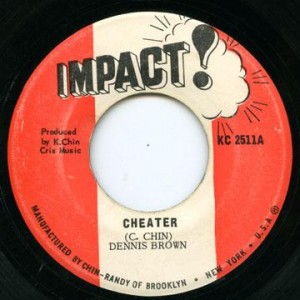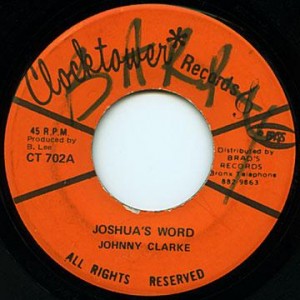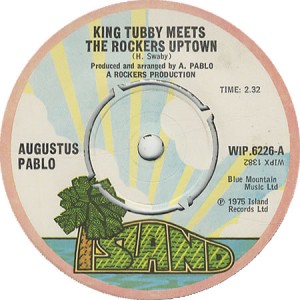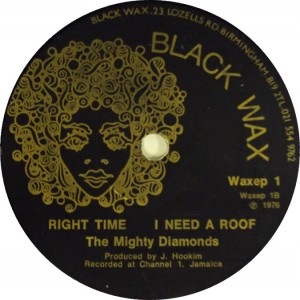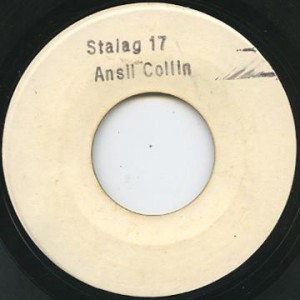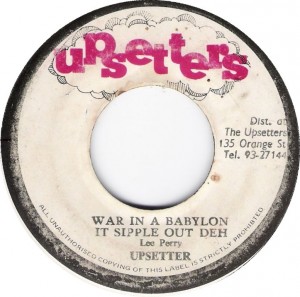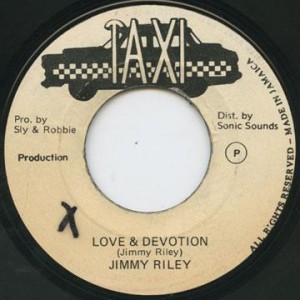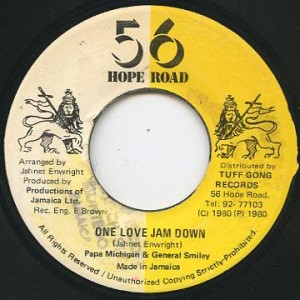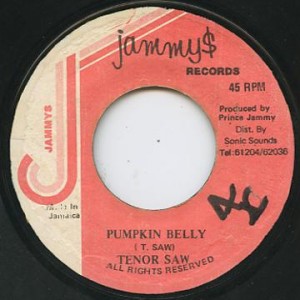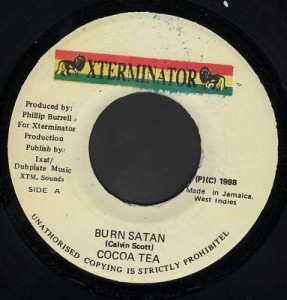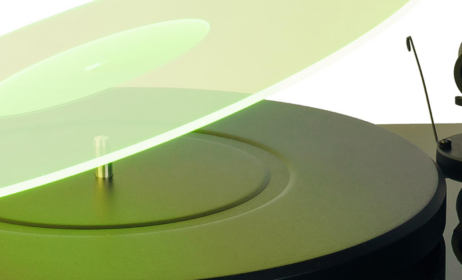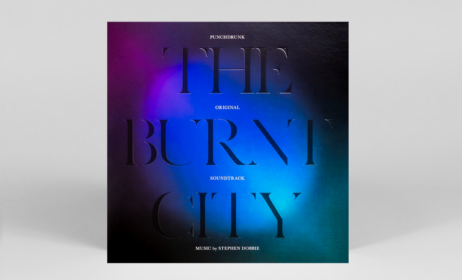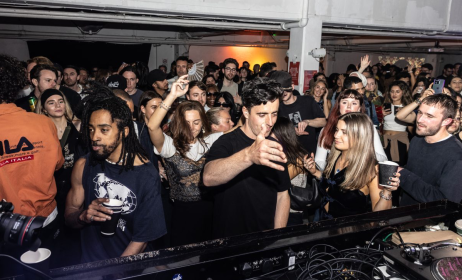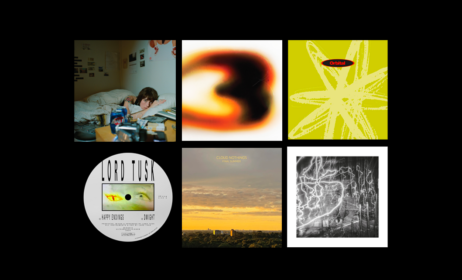Published on
August 22, 2013
Category
Features
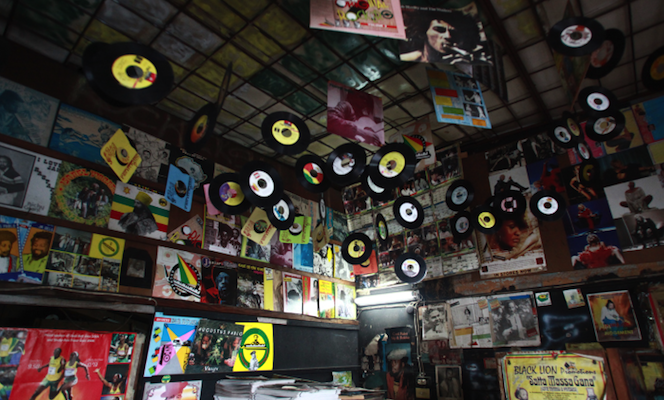
With the Notting Hill Carnival just around the corner, we’re rewinding a decade to bring you David Katz’s timeless and authoritative collection of the 20 best reggae 7″s ever made.
First published in FACT in 2003, esteemed reggae fan, writer and all-round fountain of knowledge David Katz celebrates the enduring legacy of reggae’s favourite format, the 7″ single.
Words: David Katz
The Jamaican music industry is now roughly 50 years old [read: 60 years old] and the seven-inch single is still its main focus. Most contemporary artists activate their careers with 45s and it is that format, more than vinyl albums and certainly more than CDs, that give them continued momentum in a notoriously fickle marketplace. As Jamaica now presses more 45s than anywhere else in the world, understanding the seven-inch is mandatory to comprehending reggae’s complex progression.
In the early 1950’s, Jamaican entrepreneurs began issuing 78s; the style was the indigenous folk form called mento, and such releases were aimed at visiting tourists or shipped abroad to compete with calypso. A cultural revolution arrived when downtown Kingston sound system operators began pressing 45s of local talent adapting American rhythm and blues. Many early labels drew from the imagery of their American counterparts, but as ska rose to the fore as a thoroughly home-grown form, the label artwork gradually became more individual.
Meanwhile, Jamaican expatriates started issuing 45s on small UK independents, typically featuring graphics-free logos. Though the quality of foreign pressing was typically better, some were actually mastered from Jamaican 45s and many were totally unauthorized.
Back home, African imagery appeared on some labels in the rock steady era; it became more commonplace once reggae emerged in the late ‘60s, when businesslike reggae labels were also established in New York and Toronto. Unfortunately, the quality of Jamaican vinyl was affected by the oil crisis of the 1970s, resulting in a general decline; the few seven-inch singles cut at 33rpm mid-decade suffered from poor fidelity, while the subsequent ten and twelve-inch extended singles lost popularity in the early 1980s. A rugged, durable look then appeared on singles as dancehall began to assert itself; then, once digital music took over, many Jamaican label logos became more streamlined and less artistic, though some continued to thrive on cartoon imagery and obscure jokes. These days, most label artwork is fairly straightforward and the vinyl in question varies in quality, but whatever form it takes, the seven-inch single is definitely still the centre of the reggae world.
Collecting
These days original vintage reggae vinyl can cost a real packet, with a copy of the ultra-scarce “Selassie Is The Chapel” by Bob Marley recently changing hands for a couple of grand. Gone are the days when reggae seven-inch was a dime a dozen at the Notting Hill Record and Tape Exchange bargain basement, but sometimes jumble sales and car boot fairs can still turn up the odd delight (such as the copy of a highly prized “Lambs Bread Collie” by Light of Saba that I bought for 50 cents on the street of a US city a few years back). The sad truth is that record delaers from the UK, US, Canada, Japan and Switzerland have plundered the most obvious sources in Jamaica, with even ex-jukebox stock now being scarce, but those in the know will regularly scour international mail-order lists. Unfortunately, All Tone Records, formerly run by Alton Ellis’ son, has just been impounded by the ugly capitalists that want to ruin Brixton Market by making it ‘Brixton Village’, but if you’re only just starting out as a reggae collector, a good place to find original seven-inch is Reggae Revive on Chamberlayne Road in Kensal Green; for general reissues and further information, try Dub Vendor in Battersea and on Ladbroke Grove.
(Note: Reggae Revive is now gone and Brixton Market has been irredeemably transformed into Brixton Village. While Dub Vendor no longer has stores in Battersea or Ladbroke Grove, it does now operate out of BM Music in Soho and runs a mail order service from its website. For reggae in the Notting Hill area, try People’s Sound.)
1. Higgs & Wilson
“Manny Oh / When you Tell Me Baby”
(Wirl, 1958)
One of the first locally recorded non-mento discs, adapting American R&B and doo-wop. Produced by future Prime Minister Edward Seaga.
2. Theophilus Beckford / Trenton Spence & his Group
“Easy Snapping / Goin’ Home”
(Blue beat, 1960)
The A-side’s offbeat cadence formed a proto-ska rhythm on the early Coxsone production; B-side is standard blues ballad.
3. The Folks Brothers / Count Ossie’s Afro Combo
“Carolina / I Met A Man”
(Blue Beat 1960)
A landmark that brought Count Ossie’s Africa-influenced Burru drumming to the top of the Jamaican charts; the B-side is spiritual Afro-blues.
4. Don Drummond
“Schooling The Duke / Jet Stream”
(All Stars, 1962 – reissued on Coxsone, 1970s)
The A-side’s uncommon melodic arrangement convinced Tommy McCook to lead the Skatalites; B-side is melodic blues. Nice, thick vinyl pressing.
5. The Heptones / Jackie Mittoo
“Fattie Fattie / Jump For Joy”
(Coxsone, 1967)
Suggestive A-side, often adapted in later eras, shows rocksteady on the wane; B-side is an organ creeper. Solid pressing.
6. Lee “King” Perry / Sugar & Water [aka The Silvertones]
“People Funny Boy / He Don’t Love You”
(Upset, 1968)
A-side, perhaps the first reggae, is one of the period’s wildest; B-side (some copies mislabeled) is spirited take on soul standard.
7. Hopetown Lewis & Hugh Roy / Tommy McCook and The Supersonics
“Tom Drunk / Mabrouk”
(Treasure Isle, 1971)
Bizarre Mutation of Guess Who hit is given the deejay treatment by U Roy; McCook’s B-side is chilling sax instrumental.
8. Niney & the Observers / The Observers
“Blood & Fire / Mud & Water”
(Observers, 1971)
Landmark minimalist recording by oddball producer/vocalist paving the way for declamatory roots reggae; B-side is accentuated dub.
9. The Burning Spear / Karl Bryan & The Afrokats
“New Civilization / Money Generator”
(Iron Side, 1972)
One of Spear’s brightest, most optimistic numbers is backed by a positively eerie soprano sax instrumental on top-quality vinyl pressing.
10. Pat Satchmo / Lloyd & Kerry
“What’s Going On / Tubby’s In Full Swing”
(High School, 1972)
A-side is Jamaican rendition of Marvin Gays; B-side has false Staple Singers intro that descends into trombone madness. Incredible!
11. Dennis Brown / Tommy McCook
“Cheater / Harvest In The East”
(Impact, 1972)
One of Brown’s finest, backed by moody horn version expertly produced by the young Clive Chin. Pressed on heavyweight plastic.
12. Johnny Clarke / The Agg(r)ovators
“Joshua’s Word / Horn Version”
(Clocktower, 1974)
Stunning ‘flyers’ anthem warning of Gun Court peril; B-side is riveting trombone cut. Thin, crisp vinyl press.
13. Jacob Miller / Augustus Pablo
“Baby I Love You So / King Tubby Meets The Rockers Uptown”
(Island, 1975)
A-side is nice enough but the flip is sonic landmark as Tubby dubs Pablo’s melodica to higher heights.
14. The Mighty Diamonds
“Right Time / I Need A Roof / Back Weh [Mafia] / Country Living”
(Black Wax, 1975)
Four harmonica killers from Diamonds at Channel One crammed onto a nicely centred seven-inch, heralding new ‘rockers’ phase.
15. Ansel Collins
“Stalag 17 / Version”
(Riley Inc, 1976)
Organ thriller Stalag first surfaced on the flip of a Big Youth track; this clean pressing features a compelling dub.
16. Max Romeo / The Upsetter
“War In A Babylon It Sipple Out Deh / Revelation Dub”
(Upsetters, 1976)
Roots reggae at its finest: Romeo warns of a slippery society under siege; Perry dubs the flip into oblivion.
17. Jimmy Riley / Sly & Robbie & The Revolutionaries
“Love & Devotion / Drunking Master”
(Taxi, 1971)
Sly & Robbie’s metallic rhythm pushes Riley into sonic overdrive; B-side accentuates the arriving dancehall form.
18. Papa Michigan & General Smiley
“One Love Jam Down”
(56 Hope Road, 1980)
A-side is wonderful salutation to the way reggae music cuts across social and cultural barriers; B-side is echoing dub masterpiece.
19. Tenor Saw
“Pumpkin Belly / Version Sleng Teng”
(Jammys, 1985)
Saw wails proverbs on the best vocal cut of the mighty sleng teng rhythm; B-side shows the computer as invincible.
20. Cocoa Tea
“Burn Satan / Version”
(Xterminator, 1998)
Tea gets straight to the point on chilling anti-pope/QEII/New World Order-burning anthem: an exquisite niyabinghi with digital accentuation, fantastically balanced.
Cover photo taken by Alexander Richter for Sevens Clash at Rockers International in Kingston, Jamaica. Click here to see more.

